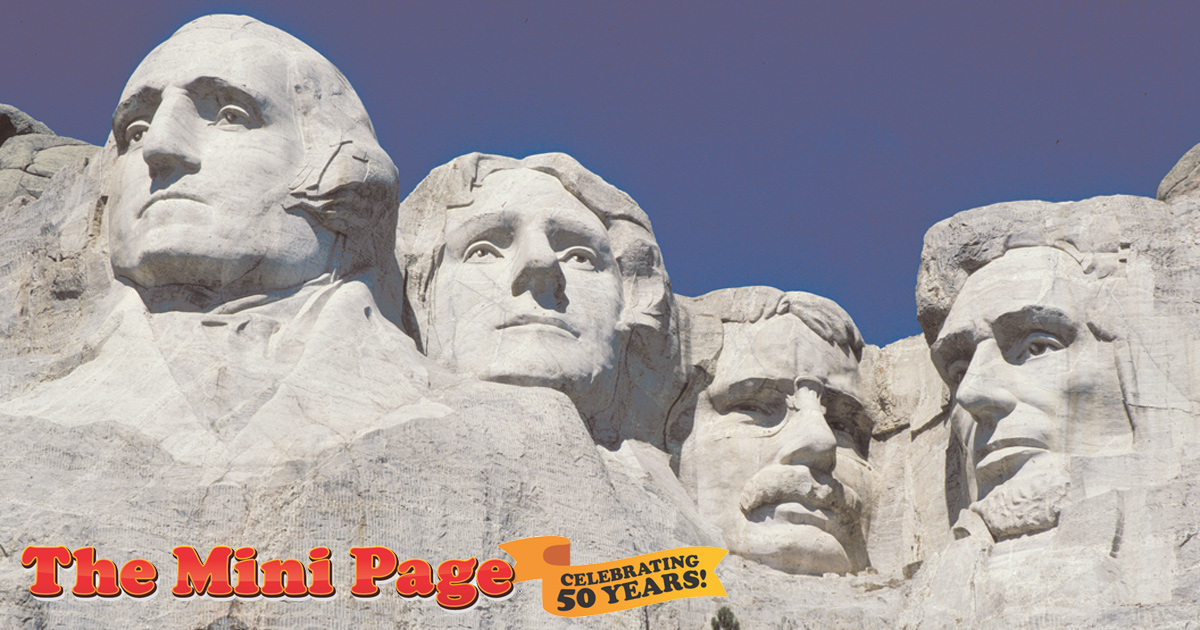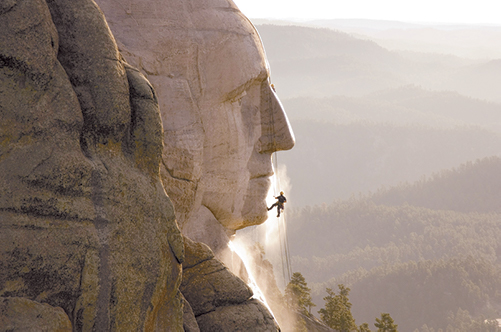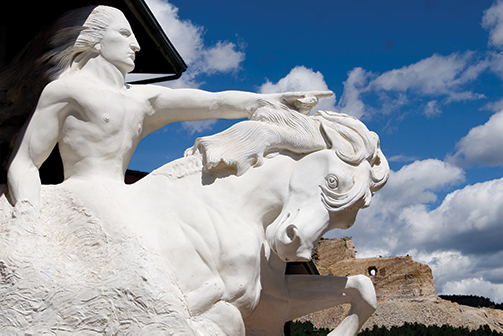
AMP | Kids is proud to announce an ongoing partnership with The Mini Page, now in its 50th year of providing engaging and fun learning opportunities to young readers across the country. This feature was originally syndicated in newspapers the week of July 6 – July 12, 2019. It is distributed digitally here with permission from Andrews McMeel Syndication. Enjoy and share with the young learners in your life!
In the 1920s, South Dakota state historian Doane Robinson got the idea that carving a sculpture in the Black Hills would attract visitors to the remote and thinly populated state — and bring in money, too. He was right. Today about 2.5 million visitors travel to Mount Rushmore each year.
A monumental project
Mount Rushmore, a giant sculpture of four presidents, is at the top of a mountain towering about a quarter mile above the main viewing area.
The sculptor, Gutzon Borglum (GUT-son BOR-glum), sculpted the faces of the four presidents he thought did the most to make our country great: George Washington, Thomas Jefferson, Theodore Roosevelt and Abraham Lincoln. Work began in 1927 and continued for 14 years. When Borglum died suddenly in early 1941, his son, Lincoln, took over and finished the project.
Carving the sculpture

A National Park Service worker dangles in a safety harness to power-wash George Washington’s head. Each fall, park employees inspect and repair cracks with a special sealing mixture. Water collects in cracks in the mountain. Each cold South Dakota winter, the water freezes. In spring, the ice melts. This cycle of freezing and thawing causes the cracks to get bigger.
Before he began the mountain sculpture, Borglum made smaller plaster models. Then he marked the mountain in red paint to show how many inches of rock workers needed to remove. The workers then blasted it away.
About 90 percent of the sculpture was carved by using dynamite. About 450,000 tons of rock were removed.
Workers next drilled to get to the final face, putting on the last touches with a hammer and chisel. The rock was then smoothed over.
About 400 workers helped carve the mountain. Most were miners, ranchers, farmers and teachers who lived in the area. They worked, dangling from harnesses, in weather ranging from hot 90-degree summers to days of 25 to 30 degrees below zero in winter. No worker was seriously injured during the whole project.
Choosing faces
Borglum first planned to carve three presidents: Lincoln, Washington and Jefferson. When he realized there was room for one more president, Roosevelt was chosen because Borglum thought he helped working people and the environment.
Native people
Native Americans in the area considered the Black Hills sacred ground. Mount Rushmore was one of seven sites in the Black Hills that they thought was especially holy.
In 1868, the U.S. government forced the Lakota people out of the Black Hills and onto reservations. These people considered the carving of their sacred mountain into sculptures of white leaders’ faces to be an insult.
Today the National Park Service seeks to honor all cultures visiting the monument. Near the visitors’ center, Lakota interpreters talk about their life and the Black Hills. A private group is currently carving a memorial of the Indian leader Crazy Horse on land about 17 miles from Mount Rushmore.

This model shows what Crazy Horse Memorial will look like when it is finished. You can see the actual sculpture, still underway, in the background.
Resources
On the Web:
At the library:
Mount Rushmore by R.J. Bailey
Teachers: For standards-based activities to accompany this feature, visit Andrews McMeel Syndication. And follow The Mini Page on Facebook!
